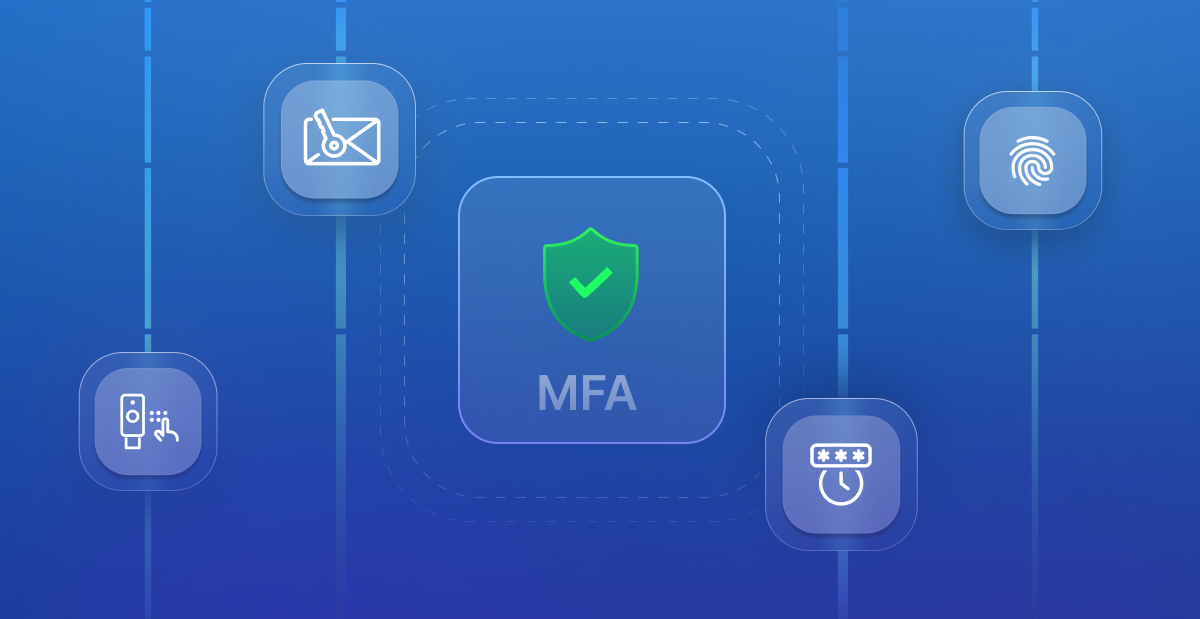Securing your passwords with a second form of authentication, such as multi-factor authentication (MFA), has been shown to keep hackers at bay. MFA helps ensure bad actors can’t access your systems because they need to breach more than just your password. In the ever-growing world of online businesses and the internet, multi-factor authentication is now the frontline defense for webmasters to stay ahead of cyberattacks. If you’re new to the fantastic world of multi-factor authentication, this guide is for you.
Understanding Multi-Factor Authentication
Authentication is an intricate process to correctly confirm a user’s identity is who they claim to be. Multi-factor authentication takes it one step further, requiring users to go through two or more forms of authentication to safely grant access. A hacker is unable to use this information to access the account or system if he or she only has access to one factor.
Some common forms of multi-factor protocols in action at online sites, e-commerce, or even top entertainment sites, and best social casinos include PINs. However, passwords, PINs, and security questions are examples of knowledge-based factors. All are becoming less reliable due to phishing attacks and data breaches.
One of the latest trends are smartphones using one-time passcodes, with generated tokens also used to verify possession. Biometrics are becoming increasingly commonplace in today’s multi-factor authentication. Common examples of biometrics include fingerprint scans, facial recognition, and voice authentication.
MFA is unique from traditional single-factor authentication as it is not one single solution, but a combination of several methods used together to help mitigate various cybersecurity risks. It is also a very flexible system with scalable solutions, with the help of AI tools.
1. MFA Provides Enhanced Security
By requiring more than one form of verification to access sensitive systems or data, it provides an additional line of defense that attackers must overcome to succeed. This makes it much more difficult to compromise accounts, and accounts are much harder to hack or break. Since MFA requires two or more authentication factors, a cybercriminal is unlikely to have access to all the credentials needed to gain unauthorized access, even if they have one, such as a password or email address.
2. Helps to Cut Down on Compromised Passwords
Passwords are the most widely used and, unfortunately, the most abused when it comes to authentication. It’s very common for people to use the same password for more than one account or use weak passwords that are susceptible to savvy hackers.
With MFA, if your password is stolen, it can’t be used on its own to gain access to the account. MFA also significantly reduces the attack surface for credential-based attacks, such as phishing and brute-force.
3. MFA Takes SSO to the Next Safe Level
MFA works in conjunction with single sign-on (SSO) products to provide a balance between security and convenience. SSO enables a user to authenticate with multiple systems and applications without the need to log in separately to each of them.
MFA easily integrates with existing SSO business infrastructure for greater security with a simplified login process for users. Employees experience less frequent login interruptions while administrators are less exposed to the risks of password reuse and password resets. This is especially helpful in the era of remote work in the post-COVID era.
Remote work is now a critical aspect of most businesses, and employees need secure access to company resources from anywhere across different devices. MFA allows users to stay mobile without sacrificing security. Enabling MFA for access ensures employees can securely access apps, systems, and networks when working remotely. Employees enjoy the flexibility to work how and when they want without sacrificing productivity or leaving sensitive company data vulnerable.
4. Teaming Up with Other Security Protocols
MFA ties into larger security efforts, such as API key protection and access control programs. MFA also works with other security controls to lower risk and help prevent lateral movement within a network. MFA also allows for much tighter access controls to be in place.
Users and customers are also more confident that their accounts are secure, with more than just a password or security protocol protecting their data. MFA shows your customers that you care about security, which helps with customer trust and brand reputation.
Final Thoughts: MFA Is Here to Stay
MFA’s advantages extend beyond keeping attackers out of your systems. MFA protects credentials, and enforces compliance. Businesses must have the right policies in place when implementing it and encourage users to practice additional security behaviors.
Legit Security can supplement MFA by adding a layer of automated security with the enforcement of authentication policies, protection of data pipelines, and incorporating secure by design best practices. By automating security, you can rest assured that MFA is a practical, scalable, and reliable line of defense against evolving cyber attacks while saving on budgets and boosting worker morale.
